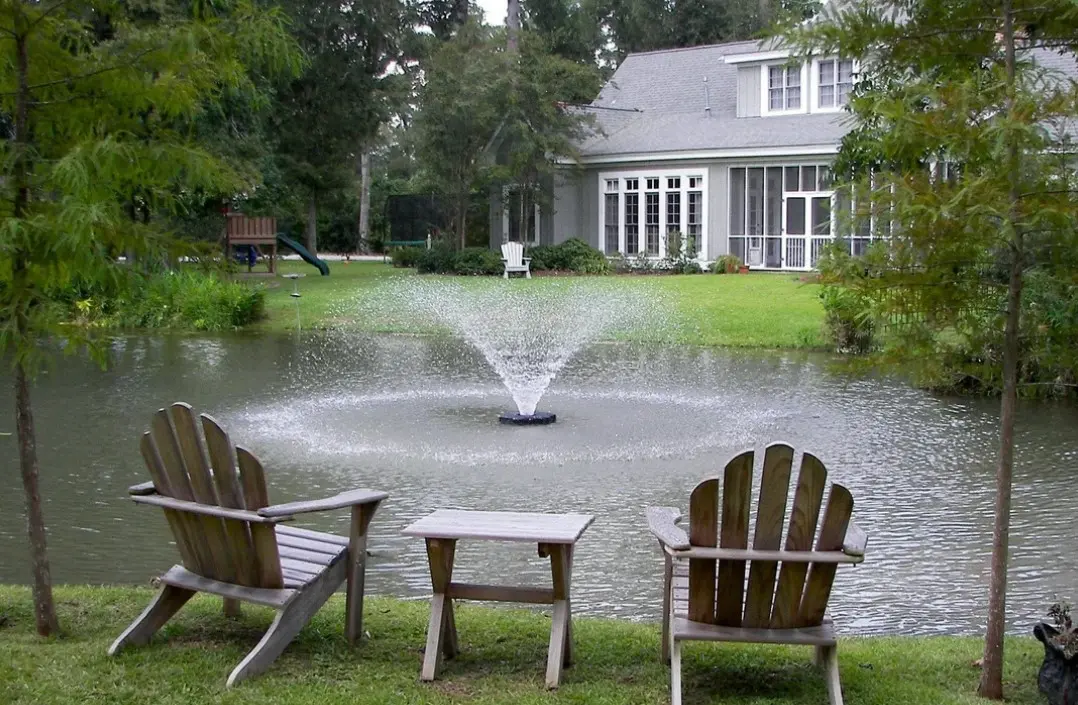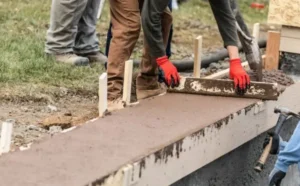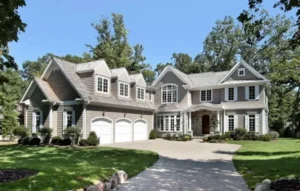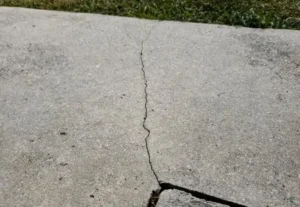Managing a pond or lake comes with ongoing challenges that many property owners discover only after problems arise. Water quality issues, death of the fish, and excessive algae growth can transform a beautiful water feature into a maintenance nightmare. The difference between successful pond management and constant headaches often comes down to the foundational equipment choices made early on.
When planning pond aeration systems, quality equipment like Kasco fountains represents a cornerstone investment that influences every aspect of pond health for decades. The upfront cost difference between basic and premium aeration systems pales in comparison to the cumulative expenses of dealing with recurring water quality problems. Professional pond managers consistently observe that lower-quality equipment generates higher long-term costs through increased maintenance, energy consumption, and the need for chemical treatments.
Understanding the True Cost of Pond Management
Initial Investment Versus Lifetime Expenses: Property owners often focus on immediate purchase prices without calculating the total cost of ownership over time. Cheap aeration systems typically require frequent repairs, consume more electricity, and fail to prevent the water quality issues that were meant to be addressed and can lead to expensive remediation efforts. Professional pond managers consistently observe that lower-quality equipment generates higher long-term costs through increased maintenance, energy consumption, and the need for chemical treatments or professional intervention services.
Hidden Costs of Poor Water Quality: Inadequate aeration creates a cascade of problems that compound over time. Oxygen depletion leads to fish stress and mortality, while stagnant water promotes harmful bacteria growth and creates unpleasant odors. These conditions often require emergency interventions, including expensive water treatments, fish restocking, and sometimes complete pond remediation. The emotional stress of losing valuable fish populations adds another dimension to the cost equation that many pond owners underestimate.
The Science Behind Durable Aeration Technology
Oxygen Transfer Efficiency Standards: High-quality aeration systems achieve superior oxygen transfer rates through advanced impeller designs and motor configurations that maximize water circulation patterns. Professional-grade equipment typically transfers 3-4 pounds of oxygen per horsepower hour, while budget alternatives often achieve less than 2 pounds per horsepower hour. This efficiency gap translates directly into energy costs and the system’s ability to maintain adequate dissolved oxygen levels during critical periods like summer heat waves.
Engineering for Longevity: Durable aeration systems incorporate corrosion-resistant materials, sealed motor housings, and precision-balanced components designed for continuous operation. Stainless steel impellers resist cavitation damage, while marine-grade wiring and connections prevent electrical failures in wet environments. These engineering details determine whether equipment operates reliably for 15-20 years or requires replacement every 3-5 years, making the long-term value proposition clear for serious pond managers.
Preventing Costly Water Quality Disasters
Thermal Stratification Management: Quality aeration systems prevent thermal stratification by creating consistent water circulation that mixes temperature layers throughout the water column. Stratified ponds develop oxygen-depleted bottom layers that become toxic environments producing hydrogen sulfide and methane gases. Breaking down these stratified layers requires substantial energy and circulation capacity that only robust aeration systems can provide consistently. Inferior equipment lacks the power and reliability needed for effective destratification during peak summer conditions.
Algae Prevention Through Circulation: Effective water movement disrupts algae growth cycles by preventing nutrient accumulation in stagnant areas. Quality aeration systems create circulation patterns that distribute nutrients evenly and maintain water clarity through consistent mixing action. This proactive approach eliminates the need for expensive algaecide treatments and manual algae removal services. Poor circulation allows algae blooms to establish and spread, creating removal costs that can exceed thousands of dollars annually for larger water bodies.
Energy Efficiency and Operational Savings
Motor Technology Advantages: Premium aeration systems utilize high-efficiency motors that consume 20-30% less electricity than standard alternatives while delivering superior performance. These energy savings compound over decades of operation, often offsetting higher initial equipment costs within the first few years. Variable speed capabilities allow operators to adjust power consumption based on seasonal needs, further reducing operational expenses while maintaining optimal water quality conditions.
Maintenance Schedule Optimization: Well-engineered aeration equipment requires minimal maintenance beyond annual inspections and occasional cleaning. Quality systems feature easily accessible components, standardized replacement parts, and clear maintenance procedures that property owners can perform without professional assistance. This accessibility reduces service costs and prevents minor issues from developing into major failures that could compromise pond health during critical periods.
Long-Term Environmental Benefits
Natural Balance Preservation: Consistent aeration maintains the beneficial bacteria populations that process organic waste and prevent nutrient buildup. This biological balance reduces the need for chemical interventions and creates a self-sustaining ecosystem that requires minimal external inputs. The natural processes supported by quality aeration systems continue functioning for decades when properly maintained, creating lasting environmental benefits that extend far beyond the equipment’s operational lifespan.
Biodiversity Support Systems: Adequate oxygen levels throughout the water column support diverse fish populations and beneficial aquatic organisms that contribute to ecosystem stability. Quality aeration creates habitat conditions that allow native species to thrive while preventing the establishment of invasive organisms that often colonize poorly managed water bodies. This biodiversity preservation has intrinsic value and reduces management complexity over time.
Key Features of Investment-Grade Aeration Systems
Professional pond managers recognize several characteristics that distinguish investment-grade equipment from budget alternatives:
- Corrosion-resistant construction using marine-grade materials and protective coatings that withstand continuous water exposure
- Energy-efficient motor designs that reduce operational costs while delivering consistent performance across varying load conditions
- Modular component systems that allow for easy maintenance and upgrades without complete equipment replacement
- Weather-resistant electrical components designed for outdoor installations with proper sealing and protection ratings
- Comprehensive warranty coverage reflecting manufacturer confidence in long-term reliability and performance standards
Installation Considerations for Maximum Value
Professional Assessment Requirements: Proper system sizing requires professional evaluation of pond dimensions, depth profiles, and intended uses. Undersized systems fail to provide adequate circulation, while oversized equipment wastes energy and may create excessive turbulence. Experienced installers consider factors like prevailing wind patterns, water source characteristics, and seasonal usage variations when designing aeration systems. This professional approach ensures optimal performance and maximizes the return on investment over the system’s operational life.
Infrastructure Planning Elements: Quality installations include proper electrical connections, secure mounting systems, and accessibility features that facilitate routine maintenance. These infrastructure elements often determine long-term reliability more than the equipment itself. Cutting corners on installation typically leads to premature failures and safety hazards that compromise the entire investment. Professional installation practices protect both equipment and property while ensuring optimal performance throughout the system’s operational life.
Return on Investment Analysis
Comparative Cost Calculations: Property owners should evaluate aeration investments using total cost of ownership models that include purchase price, installation costs, energy consumption, maintenance expenses, and expected lifespan. Quality systems typically cost 40-60% more initially but deliver 200-300% longer operational life with significantly lower maintenance requirements. The energy efficiency advantages of premium equipment generate additional savings that compound over decades of operation, making the economic case compelling for long-term property ownership.
Property Value Enhancement: Well-maintained ponds with reliable aeration systems enhance property values and marketability significantly. Real estate professionals consistently report that attractive, healthy water features command premium prices and attract qualified buyers more effectively than problematic ponds requiring immediate attention. This value enhancement often exceeds the cost of quality aeration equipment, making the investment profitable even before considering operational benefits.
Conclusion
Investing in durable aeration solutions represents a strategic decision that influences pond management success for decades. Quality equipment prevents the recurring problems and emergency interventions that plague properties with inadequate aeration systems. The upfront investment in reliable, efficient aeration technology pays dividends through reduced operational costs, enhanced water quality, and preserved property values. Take action today by consulting with experienced pond management professionals who can assess your specific needs and recommend appropriate aeration solutions for long-term success.
Also read-Designing a Home for a Large Family








